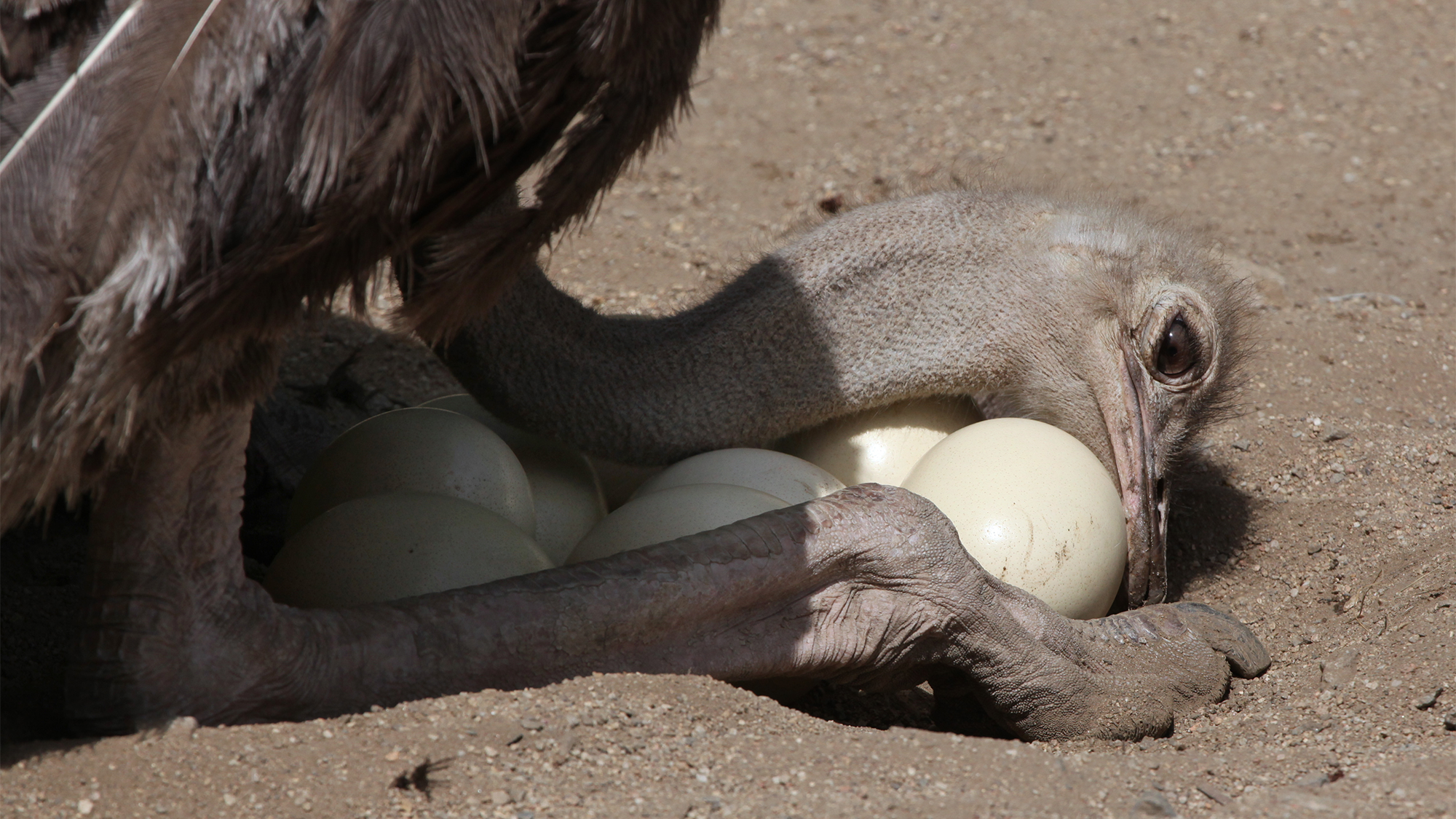

Watching a bird leap around on its crooked legs before it takes off into the air is kind of like turning back the evolutionary clock and watching a theropod dinosaur. Numerous paleontologists believe that theropod group, which includes the spinosaurus, tyrannosaurus rex, and velociraptor, evolved into the birds we see on Earth today. This would make them the only dino-descendants that survived catastrophic extinction 66 million years ago.
Like birds, theropod dinos also laid eggs, and scientists are beginning to fill in evolutionary gaps by studying the shelly remains. A study published April 3 in the journal Proceedings of the National Academy of Sciences (PNAS) examined the calcium carbonate left behind in the eggs of a funky theropod called Troodon and found that the dinosaurs laid four to six eggs in communal nests.
[Related: Newly found titanosaur eggs reveal dino nurseries once teemed with baby giants.]
Troodon was a carnivorous dinosaur over six feet long that lived in North America about 75 million years ago. It had some bird-like features, particularly its light and hollow bones, two legs, and fully developed feathery wings. However, the dinosaur’s relatively large size kept it from flying, but it likely ran very fast and caught prey in strong claws.
Troodon females also laid eggs that are more similar in shape to the asymmetric eggs laid by modern birds than to the round reptile eggs. Their eggs were blue-green colored like other theropod eggs, and they have been found half buried into the ground. The international team of scientists on this study believes that mother Troodons sat and brooded on them.

To learn more, the team examined the calcium carbonate left behind in some well-preserved Troodon eggshells. They used a method developed in 2019 called “dual clumped isotope thermometry.”
With this technique, they could measure the extent to which heavier isotopes of oxygen and carbon clump together in carbonate minerals. Isotopic clumping is temperature-dependent, and the prevalence of this clumping helped the team determine the temperature at which the carbonates crystallized. The eggshells were likely produced at temperatures of 107 degrees Fahrenheit and then deduced down to 86 degrees, which is very similar to modern birds.
[Related: A fossilized egg laid by an extinct, human-sized turtle holds a rare jackpot.]
The team then compared the isotopic compositions of reptile egg shells (alligator, crocodile, and multiple turtle species) with modern birds (chicken, sparrow, wren, emu, kiwi, cassowary, and ostrich) to see if Troodon was closer to either birds or reptiles. Two different isotopic patterns were revealed. The reptile eggshells have isotopic compositions matching the temperature of the surrounding environment, since they are cold-blooded and form their eggs slowly. Birds leave a recognizable non-thermal signature in the isotopic composition, which is evidence of quick eggshell formation.
“We think this very high production rate is connected to the fact that birds, unlike reptiles, have a single ovary. Since they can produce just one egg at the time, birds have to do it more rapidly,” study author and geochemist from Goethe University Frankfurt in Germany Mattia Tagliavento said in a statement.
The team compared these results to the remains of Troodon eggshells and did not not detect the isotopic composition which is typical for birds. According to Tagliavento, “this demonstrates that Troodon formed its eggs in a way more comparable to modern reptiles, and it implies that its reproductive system was still constituted of two ovaries.”
As a last step, the researchers combined their results with existing knowledge about body and eggshell weight and determined that Troodon only produced only four to six eggs per reproductive phase. They found this observation particularly notable because Troodon nests are typically large and have up to 24 eggs, so the team believes that this means they laid their eggs in communal nests. This communal egg nesting behavior is seen in modern day ostriches.
“Originally, we developed the dual clumped isotope method to accurately reconstruct Earth’s surface temperatures of past geological eras,” study co-author, geochemist, and developer of the new thermometry method Jens Fiebig, said in a statement. “This study demonstrates that our method is not limited to temperature reconstruction, it also presents the opportunity to study how carbonate biomineralization evolved throughout Earth’s history.”
